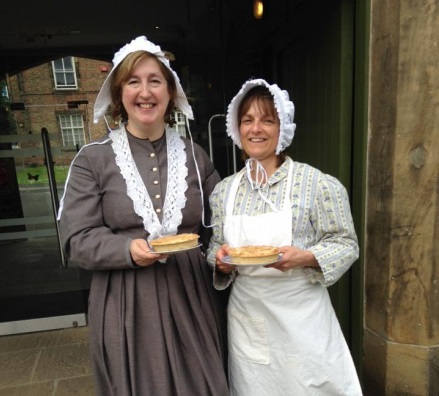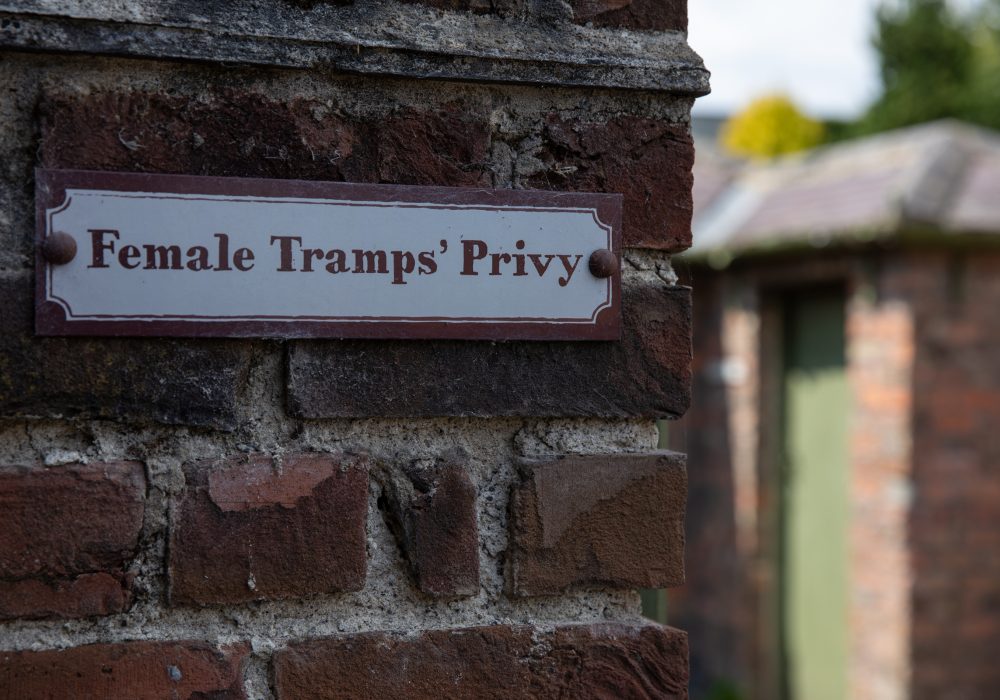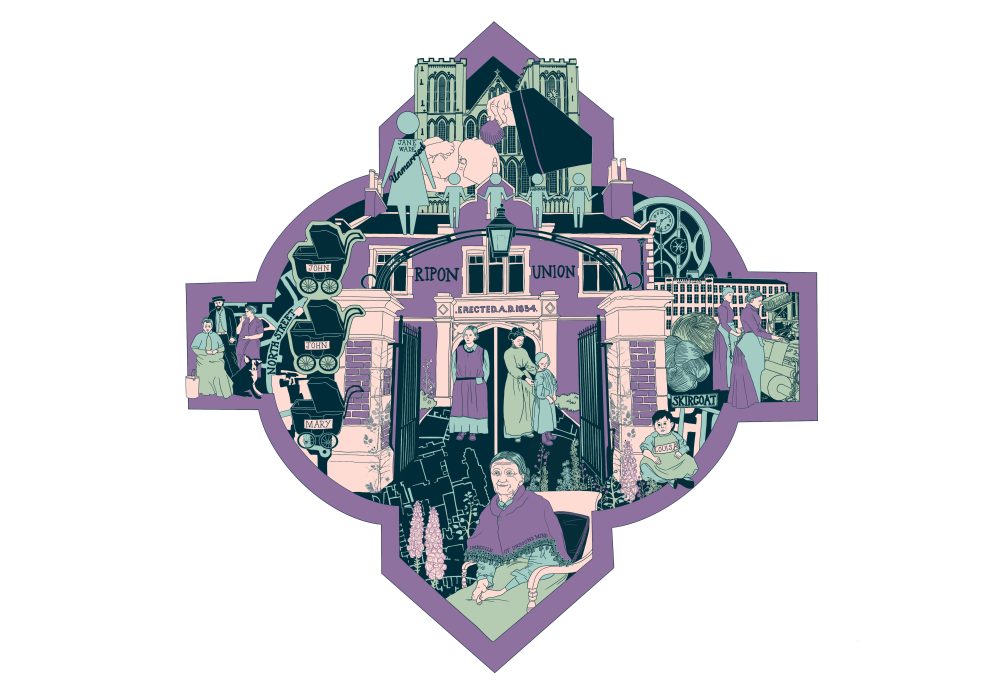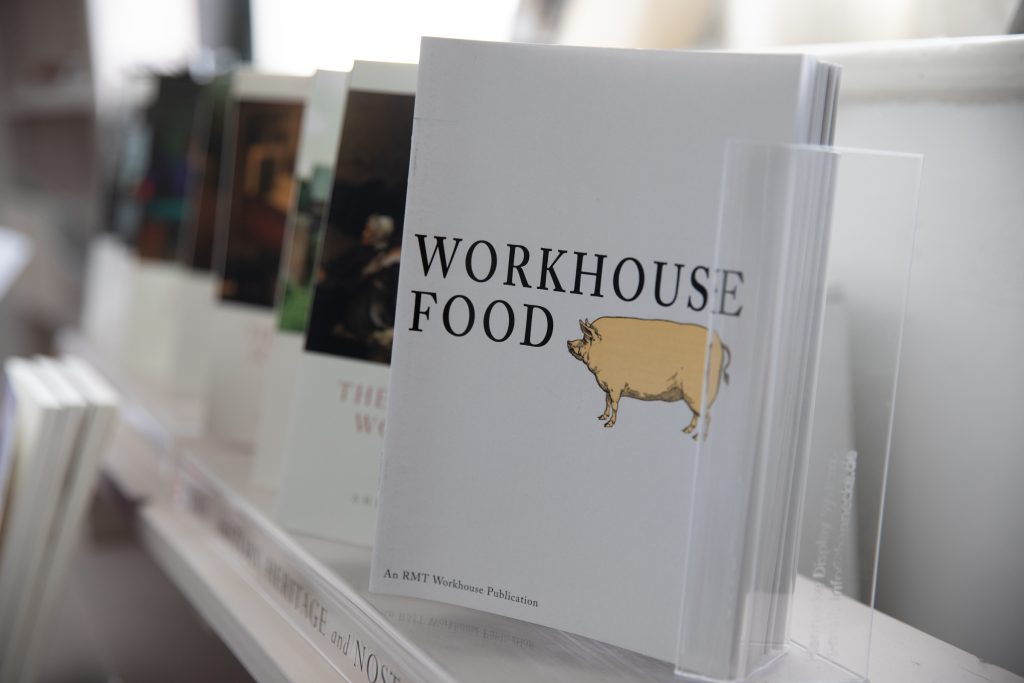
It’s easy to imagine that the food eaten by workhouse inmates was terrible.
In 1834, the ‘New Poor Law’ was created to help reduce the cost of looking after the poor. Workhouse inmates would be fed and clothed, in exchange for manual labour. There were strict rules on which foods inmates could eat and how much they were given, although these varied between different Poor Law Unions.
Inmates even had the right to question their portion size to be sure they received the right amount. A set of scales was kept in the dining room at Ripon Workhouse to weigh an inmates’ food.
What was food like in a Victorian workhouse?
The records from Ripon Workhouse give us an idea of the food inmates would be given, and how this changed over time as people came to understand more about the importance of nutrition.
This dietary was submitted and approved for use in Ripon Union Workhouse in 1853:
- Breakfast and supper: 7oz of bread and either 1½ pints of porridge or 2oz cheese.
- Lunch: It could be 5oz cooked meat and 12 oz potatoes; 6oz bread and 1½ pints of soup; or 16oz meat and potato pie and 14oz of suet or rice pudding.
Women and children were served slightly less than the men. The elderly were often allowed to enjoy a ration of tea, sugar and butter per week for breakfast and supper. Diets of the sick or infirm were left to the discretion of the medical officer. The dietary was very bland and monotonous.
This diet lacked fruit and vegetables and only offered a small amount of protein, which meant inmates would be missing key vitamins and minerals. The diet was designed to give the least amount to sustain life and also to act as a deterrent to the ‘undeserving’ seeking admission to the workhouse.
By 1866, different diets were in use in Ripon Workhouse. As well as the ordinary diet, a full diet was prescribed involving extra tea, sugar and butter; a light or low diet; a fever diet; and a half diet, all at the discretion of the medical officers. Inmates were also given vegetables that were grown in the workhouse garden. During this time diets in the workhouse became more than adequate as people’s awareness of the nutritional value of food increased.
The Master’s Requisition Books from 1914 to 1923 show an even greater variety of food, including margarine, cocoa, lentils and dripping. The baking accounts from the late 1800s and early 1900s show that bread was baked on the premises, and after 1900 some cakes were baked too.
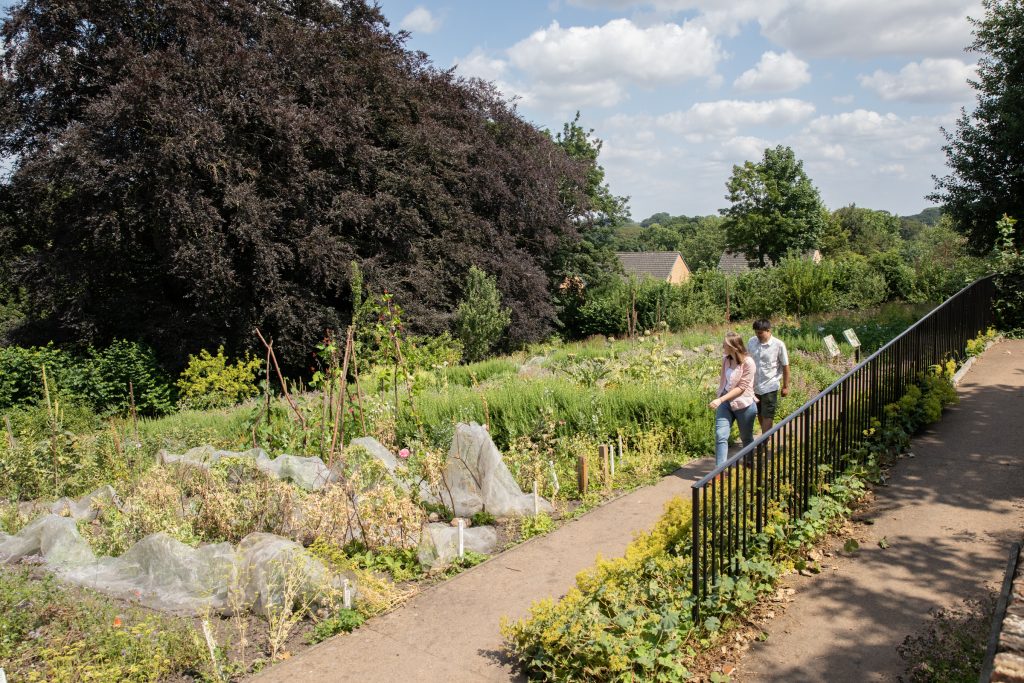
Workhouse gardens
Workhouses often managed their own gardens to create a supply of fruit and vegetables. This helped to save on the cost of food and provided inmates with jobs. In the early years older men and boys worked in the gardens and this helped to prepare the boys to go into service.
Heritage gardening
At the Workhouse Museum, we use heritage techniques to manage our gardens, growing flowers, fruit and vegetables that would have been available in the 1890s.
Consumption: An Arts Project
“I remember the visiting the museum for the first time and being overwhelmed by the hardship faced by the poor who were interred here: the mindless work and long hours, the paltry food portions, the splitting up of families. I’m sure many of us are familiar with workhouse horror stories, so I was surprised to find a census from 1861 listing all inmates at Ripon Workhouse and to discover so many older people living here. Usually we think conditions were so harsh that only the fittest and strongest survived, but Ripon seemed to buck the trend. Here, nearly half of inmates were over 60 years old and 90% of those were living well into their 70s and 80s. So the question arose, was there something about regular meals and company that led to longer life?”
Pippa Hale
In 2017, contemporary artist Pippa Hale was commissioned to create a new artwork at the Workhouse Museum.
In a day long performance project, Pippa filmed 50 museum volunteers preparing, cooking and eating a typical Victorian Workhouse meal for her new artwork, Consumption, which links past and present experiences within a specific location. This was displayed in the original Workhouse Dining Hall, which is part of the Workhouse Museum’s main block.
Pippa’s research into the museum’s archives helped to ensure that this was an accurate representation of a Victorian pauper’s meal in 1861, with ingredients, recipes and preparation techniques as well as etiquette and seating plans all drawn from historic sources.
A small group of volunteers prepared the workhouse lunch using a traditional menu, recipes and cooking techniques under the direction of professional cook, Gaynor Eden. This was served and consumed in the original Dining Hall, where participants were segregated by sex as would have occurred in the 19th century.
Cook Gaynor Eden created the meat pie from a Victorian recipe, with beef ‘stickings’ supplied by the same family of Ripon butchers who originally supplied the workhouse and topped with pastry made with ‘dripping’. She comments: “I researched the meat pie previously and was surprised that it didn’t taste that bad, despite the fact that it had no additional flavouring and the meat wasn’t browned. It must have been hard for people to work manually day in day out on this diet.” The meat pie, with no additional vegetables, would have been washed down with tea, made in a big pot with milk and sugar already added regardless of personal taste.
Many of the volunteers noted that the food reminded them of school dinners. On a deeper note, it was an opportunity for them to reflect on what life was like for workhouse inmates many, many years ago. Glenys observed: “To eat in this dining hall was a very emotive experience for me, the ladies filed in after the men from a separate entrance, which would probably have meant that their food was cold. Life for people living here must have been really austere – I am surprised that people in the workhouse lived for so long.”
Wilfra cakes
A Wilfra cake is a traditional fruit tart made in Ripon as part of the festival of St Wilfra, which takes place at the beginning of August to commemorate St Wilfra, or Wilfrid, who began building Ripon Cathedral in the 600s and is its patron saint.
There is some evidence that the cakes may have been given to Ripon Workhouse inmates during the festival.
If you’d like to make your own Wilfra cake, you can find the recipe on our blog.
What is a Wilfra cake?
Simply, it’s a shortcrust pastry case filled with apples and Wensleydale Cheese – a combination much loved by Yorkshire people. As the saying goes “Apple cake without some cheese is like a kiss without a squeeze!” The Wilfra Cake is not to be confused with its cousin, the Wilfra Tart, which has a filling of lemon and ground almonds.
